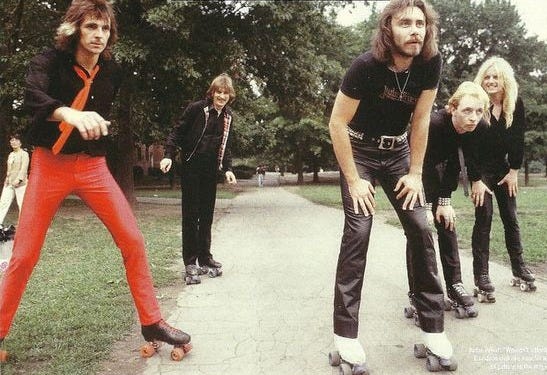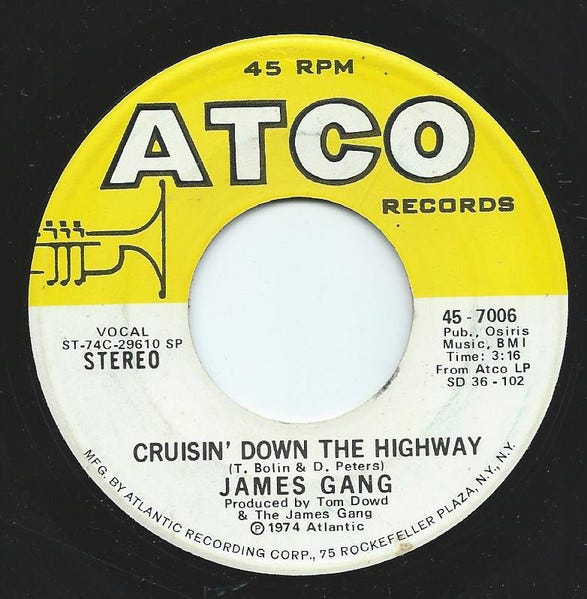Tune Tag #112 with Jorge Garcia of Geekatune: Judas Priest, The Who, Rush, Doobie Brothers, Billy Newton-Davis, Nirvana, Tom Petty, Keith Moon
Looks like a right proper cornucopia of classic rock to me! You? "Things aren't always as they seam" said the tailor. Don't skirt the issue. Hem'n'haw all you'd like. The surprises are beyond measure❗
Don’t worry, Jorge…this isn’t what Tune Tag en-tails…necessarily…all the time!
Tune Tag offers a decidedly slapstick welcome to of !
Jorge Garcia is a lifelong techie and music geek who believes every song carries a hidden story worth telling. From prog rock epics to jazz improvisations and classical masterpieces, he writes about music not just as sound, but as memory, culture, and connection. Geekatune is his corner of the web to dive deep, share personal reflections, and celebrate the records that move us.
Last week, we had Tune Tag fun with Bubble Puppy drummer, of , who scored a #14 U.S. hit in 1969 with “Hot Smoke & Sassafras”:
Next week, we’ll welcome October with the wily Tune Tag stylings of of !
Jorge’s song #1 sent to Brad: Judas Priest, “Heading Out to the Highway,” 1981

“A fun song of freedom and determination.”—Rob Halford to Greg Prato, Songfacts
Jorge’s rationale: I’m starting this round of Tune Tag with “Heading Out to the Highway” by Judas Priest (written by Rob Halford, K.K. Downing, Glenn Tipton), not just because it’s a classic, but because it holds a special place in my personal soundtrack.
Back in my teens, I had a friend who introduced me to heavy metal, and this track (from Point of Entry on Columbia Records, produced by Tom Allom and Judas Priest) was one of his absolute favorites. Sadly, he’s no longer with us, but every time I hear those opening riffs, it’s like he’s riding shotgun again, air-guitaring his heart out and yelling the lyrics with that wild grin of his!
This song really captured something we both connected with, this sense of rebellion, of breaking loose and going your own way. There’s something unapologetic and freeing in the way Priest delivered it in this track.
It wasn’t just angry for the sake of it; it was confident, driven, and full of a kind of optimism wrapped in denim and distortion. That energy, that “get up and go” vibe, felt like a call to live loud and without fear, and we leaned into that hard.
So for me, “Heading Out to the Highway” is more than just a nice track; it’s a nod to someone who shaped my taste in music and made metal feel like home. It’s a bit of nostalgia, a bit of tribute too, and a loud, fast way to say or dream: Let’s hit the road and see where the music takes us!
Brad’s song #1 sent to Jorge: Doobie Brothers, “Rockin’ Down the Highway,” 1972

Jorge’s response: Mmm… great response! The Doobie Brothers’ “Rockin’ Down the Highway” is a smart and layered comeback to my pick. Here are a few ways I think it ties in with “Heading Out to the Highway”:
First off, there’s the obvious but fun thematic connection…the highway itself. Both songs are road anthems; they celebrate motion, freedom, and escape, each in their own musical dialect, but whereas Judas Priest channels the gritty, revved-up spirit of hitting the open road with leather and steel, the Doobies come at it with a more laid-back but equally confident California cool:
Not screaming down the asphalt, but cruisin’ it:
But for me, the tie goes deeper than just the lyrics or titles; it seems both songs capture a sense of rebellion, just painted in different shades.
“Rockin’ Down the Highway” may not have the metal edge, but it’s got that joyful defiance, kinda “we’re doing our thing, and we don’t care if you’re coming with us or not” energy. It’s groove-driven, tight, and catchy, but there’s still a sense of muscle under the harmony, a great sonic contrast to Priest’s riff-heavy charge.
Both songs celebrate the freedom of the highway, not just as a place, but as a state of mind.











